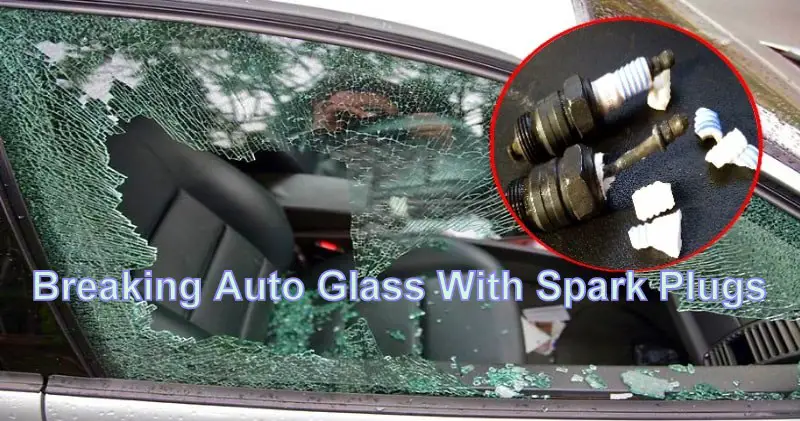How to Stop Squeaky Windshield Wipers
It’s impossible to ignore squeaky windshield wipers. The noise they produce is similar to that made when you scratch your fingernails on a chalkboard, which is annoying.
When your windshield wipers are squeaking, you can’t relax to enjoy the music or effectively focus on the road—your mind is always on the annoying wipers.
Some car owners opt to ignore the wipers, but I strongly advise against this as the squeaking is often a symptom the wipers aren’t working efficiently.

It might also be a sign the wipers are about to fail and might damage your windshield.
Since you can’t wish the problem away, you have to stop it. To help you out, here are tips on how to stop squeaky windshield wipers:
Why do windshield wipers squeak in the first place?
When you visit a hospital, the doctor will take your medical history so that he/she can understand the condition better. Before we rush to stopping the noise, let us first understand what might be causing the squeaking.
Windshield wipers will squeak due to various reasons that include:
Dust and other debris: As you drive, it’s common for dirt and other debris to adhere to the wipers or windshield.
Poor wiper installation: When you buy wipers at the store, the technicians at the store might improperly install them, leading to squeaking.
The rubber might be getting too old: How old are your wipers? If they are more than six months, the windshield rubber is most likely old, hard, and brittle.
In addition to the old rubber making the squeaky noise, it can also break the wiper, which can be dangerous and unfortunate during a rainstorm. In extreme cases, the hard rubber can damage the windshield.
Poor quality wipers: I have friends that complain that their wipers started squeaking after a week of installation. This is usually due to buying poor quality wipers.
If having this problem and bought the wipers at premium prices, they might have stayed in the box for a long time, making the rubber hard or cracked.
Are you having this problem? You should replace the wipers immediately.
How to stop squeaky windshield wipers
As we mentioned, you shouldn’t ignore squeaky windshield wipers at all. Luckily, it’s not hard to stop the noise. You only need to find the source of the noise and fix it. Some of the ways you can stop the noise include:
Remove the dirt buildup from the wiper blades.
If the squeaky noise is due to dirt or debris in the blades, removing the buildup will stop the noise. Lift the blades away from the windshield, then use a wet piece of paper and wipe the blades until they are clean.
As you are cleaning the blades, also clean the arm and hinged parts as they can also stiffen with dirt and grime, contributing to the squeakiness.
If you have been in a dusty area, obviously the blades are too dirty. You may need several pieces of paper or even a rag to clean the blades effectively in such a situation.
While at it, inspect the blade for signs of damage. If you notice cuts, tears, or cracks, consider replacing the blade.
Clean the windshield
Removing gunk from the blades isn’t enough—you also have to clean the windshield to eliminate the squeakiness.
Apply a substantial amount of ammonia-free glass cleaner on the windshield, then wipe it clean with a soft, lint-free cloth. Wipe the glass in the top-to-bottom motion until it gets clean.
When purchasing the glass cleaning products, ensure they are ammonia-free as ammonia cleaners can damage the tinting, and degrade the plastic.
You can also use white vinegar but take care not to apply it to the car’s painted areas.
Have you gone for a long time without cleaning the windshield? You don’t have to get fancy with it. Use the household baking soda.
Sprinkle a substantial amount of baking soda on a water-dampened paper towel, then wipe the glass clean in the top-to-bottom motion.
Did the windshield begin squeaking shortly after applying the wax? The wax you used might be the culprit, and to stop the noise, you should remove it.
To do it, you need a clean, non-abrasive cloth, glass polish, and water.
Dampen a piece of cloth with water and wring out the excess. Apply at least a quarter-size amount of glass polish to the cloth and rub it onto the windshield in the firm, circular motions.
You should then add more polish and continue until you treat the entire windshield.
Once you are done, rinse the windshield thoroughly with water.
Top up the wiper fluid
Sometimes the squeaking noises will come about when the windshield glass is too dry. For the blades to glide across the windshield quietly, you need to lubricate them.
Begin with locating the windshield wiper fluid reservoir under the hood.
It’s usually a marked plastic container bearing an icon resembling wipers on the windshield.
After locating the container, unscrew the cap and pour the windshield wiper fluid inside to below the top. To prevent spillage, use a funnel.
To prevent the problem from coming about in the future, make a habit of checking the wiper fluid once a month and top it off if necessary.
When buying wiper fluid, ensure you are buying the right one from a reputable company.
Soften the windshield wipers
As we mentioned above, one of the reasons the wipers are noisy is due to the hardening of the rubber part. Stiff wiper blades can even damage your windshield.
To soften the rubber, apply a good amount of ArmorAll Cleaner to a piece of paper towel, then using circular motions, apply the liquid into the rubber parts to soften them.
Rubbing alcohol is also highly effective. Gently apply rubbing alcohol on the stiff rubber, and the hardness will go away.
Experts also recommend you use WD-40. Spray a little WD-40 on a paper towel, then lightly apply it to the rubber. While this technique is effective, use it sparingly as it has been shown to dry out the rubber.
Adjust the position of the wiper blades
Do you think the wiper chatter is due to improper installation? Adjusting the position of the blades will fix the problem.
Windshield wipers are designed to follow behind the wiper arm’s motion, so when they are improperly installed and don’t trail behind the arm, they are bound to make the noise.
Properly installed wiper blades should never “dig” into the windshield or be in a vertical position as they sweep across the windshield.
If your blades are in this position, twist the arm with your hand to ease the stiffness.
Adjust the wiper assemblies
It’s normal for the wiper assembly’s tightness to change overtime where it gets tighter or loose. This is often due to ice or snow build-up, accumulation of debris, and drastic temperature changes.
To restore the assembly to its normal working condition, you should adjust it accordingly. Luckily, it’s easy to make adjustments. The tools you need for the work are: flathead screwdriver, socket to fit the wiper arm nut, and ratchet.
Begin with determining whether the assembly is too tight or too loose. This is a trial and error process that involves you wiggling the wiper arm gently.
If it feels wobbly, tighten it. If you jiggle it and there isn’t any give, try loosening the assembly.
Find the nut that holds that wiper in place—it’s often at the base of the wiper arm. You should then use a ratchet to tighten or loosen the bolt. Take care not to tighten it too much that you break it.
Adjust the blades such that the blades are firmly in place but loose enough to sweep across the windshield.
Replace the entire wiper assembly
If you have adjusted the assembly a few times and still blades are wailing, consider replacing the entire assembly. To do this, you need a ratchet, flathead screwdriver, wiper arm assembly, and socket to fit the bolt or retaining nut.
It’s easy to replace it, but if you don’t have time or you don’t consider yourself a handy person, let a professional handle it for you.
When buying the new assembly, buy from a reputable company.
Get rid of friction, increasing films.
While windows with tint and other films give the car an elegant look, they sometimes increase friction causing annoying chatter. Have you recently had your windows done? Remove the film, and the noise will hopefully go away.
Replace the wiper blade
No amount of cleaning or lubrication will quiet worn out wiper blades as the rough edges won’t slide across the windshield as they are supposed to.
If you have had your blades for a long time, you have to replace them to stop the squeaky noises.
Luckily, good quality replacement blades are inexpensive, and you don’t need a degree in engineering to swap them—you can swap them by yourself.
Begin with purchasing the wiper blades the lift up the windshield wiper arm to access the blades. To have an easy time, grasp the rubber blade from the side furthest from the wiper assembly.
You should then thread the new blade assembly into the wiper structure until it locks into place.
Replace the rubber inserts
If the arm and non-rubber parts are still in good condition, you don’t need to replace the entire blade, right? Remove and replace the rubber blade inserts, and you are good to go.
It’s time-consuming but doable.
Since so many things can contribute to the noise, it’s time-consuming to diagnose the cause of squeaky windshield wipers. Luckily, it’s easy to fix the problem once you have found the cause.
You can fix most of the issues by yourself, but if you don’t have the time or don’t feel comfortable trying to repair the problem yourself, let a certified mechanic handle it for you.


